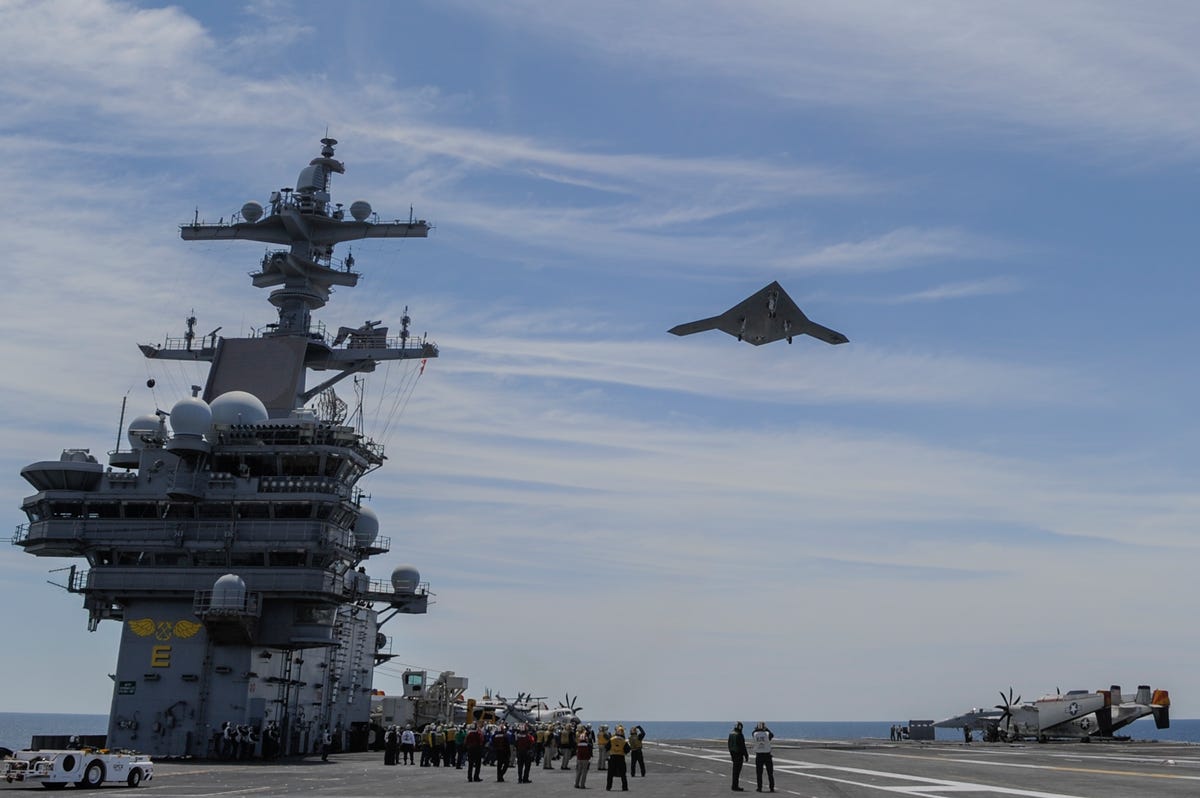Meet the self-flying plane the Navy spent over $800 million to build
The unmanned aircraft spreads its wings in a historic catapult launch from the flight deck of an aircraft carrier. Here's how the U.S. Navy got everything shipshape.

X-47B flyby
After taking off from the Bush, the Navy said, the X-47B made several planned low approaches to the carrier (under the control of an operator aboard the ship) off the coast of Virginia and then flew across Chesapeake Bay to land at Naval Air Station Patuxent River, Md., after an approximately 65-minute flight.
But the X-47B wasn't done carving out notches in naval history. Two months later, on July 10, 2013, it made its first arrested landing, no easy feat, also on the Bush -- that is, like piloted planes that land on a carrier, it used a hook on the underside of its fuselage to catch a cable stretched across the flight deck.
In the slideshow that follows, we'll take you through some of the steps that got the X-47B to its historic accomplishments in the spring and summer of 2013.
Editors' note: This slideshow was first published on December 1, 2012. It was updated later in December with photos of the X-47B on the flight deck of the USS Harry S. Truman at sea, and then again on May 14, 2013, with photos from the X-47B's flight from the USS George H.W. Bush. It was subsequently updated on July 11, 2013, with details of its arrested landings on the carrier.

